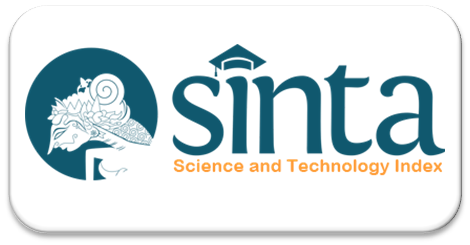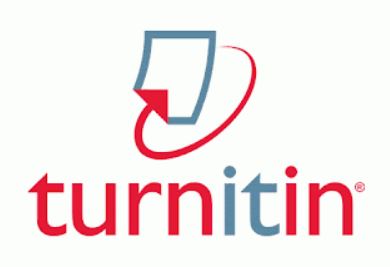Hepatoprotective Activity of Ethanol Extract of Mobe Leaves (Artocarpus lacucha Buch-Ham.) on Total Bilirubin, ALT, and AST Levels, and Macropathology of Liver in Rats Induced by Carbon Tetrachloride
DOI:
https://doi.org/10.35960/vm.v17i3.1490Keywords:
Hepatoprotective, Ethanol Extract of Mobe Leaves, Carbon TetrachlorideAbstract
This study evaluates the hepatoprotective effects of ethanol extract of mobe leaves (Artocarpus lacucha Buch-Ham.) in rats induced with carbon tetrachloride (CCl4). The objective was to determine the extract's efficacy in reducing liver damage markers, specifically total bilirubin, alanine aminotransferase (ALT), and aspartate aminotransferase (AST) levels, and to assess liver macropathology. The ethanol extract was prepared by maceration using 96% ethanol. Results showed that administering 400 mg/kg body weight (BW) of the extract significantly reduced total bilirubin, ALT, and AST levels in CCl4-induced rats. Additionally, liver macropathology observations indicated improved liver conditions in the treatment group. Phytochemical screening revealed bioactive compounds like flavonoids, alkaloids, tannins, saponins, triterpenoids, and glycosides, which are potential antioxidants and hepatoprotective agents. The significant contribution of this research is providing a scientific basis for using mobe leaf extract as a natural hepatoprotective agent, highlighting its potential for safe and effective herbal medicine. Further research and clinical trials are recommended to validate these findings and explore the extract's therapeutic applications.
References
4(2), 205–217. https://doi.org/10.24042/jpifalbiruni.v4i2.93
Jagtap, U. B., & Bapat, V. A. (2010). Artocarpus: a review of its traditional uses, phytochemistry and pharmacology. Journal of Ethnopharmacology, 129(2), 142–166. https://doi.org/10.1016/j.jep.2010.03.031
Madrigal-Santillán, E., Madrigal-Bujaidar, E., Álvarez-González, I., Sumaya-Martínez, M. T., Gutiérrez-Salinas, J., Bautista, M., Morales-González, Á., García-Luna Y González-Rubio, M., Aguilar-Faisal, J. L., & Morales-González, J. A. (2014). Review of natural products with hepatoprotective effects. In World Journal of Gastroenterology (Vol. 20, Issue 40, pp. 14787–14804). WJG Press. https://doi.org/10.3748/wjg.v20.i40.14787
Pandey, A., & Bhatnagar, S. P. (2009). Preliminary phytochemical screening and antimicrobial studies on Artocarpus lookcha Roxb. Journal Acient Science of Life, 28(4), 21–24.
Rusmaladewi, A., & Istanto, W. (2014). Pengaruh pemberian N-acetylcysteine terhadap kadar SGOT dan SGPT pada tikus Wistar yang diberi parasetamol. Medica Hospitalia: Journal of Clinical Medicine, 2(2), 78–83. https://doi.org/10.36408/mhjcm.v2i2.96
Salama, S. M., Bilgen, M., Al Rashdi, A. S., & Abdulla, M. A. (2012). Efficacy of Boesenbergia rotunda treatment against thioacetamide-induced liver cirrhosis in a rat model. Evidence-Based Complementary and Alternative Medicine, 2012. https://doi.org/10.1155/2012/137083
Sitorus, P., Keliat, J. M., Asfianti, V., Muhammad, M., & Satria, D. (2022). A Literature Review of Artocarpus lacucha Focusing on the Phytochemical Constituents and Pharmacological Properties of the Plant. In Molecules (Vol. 27, Issue 20). MDPI. https://doi.org/10.3390/molecules27206940
Tacke, F., Luedde, T., & Trautwein, C. (2009). Inflammatory pathways in liver homeostasis and liver injury. Clinical Reviews in Allergy & Immunology, 36(1), 4–12. https://doi.org/10.1007/s12016-008-8091-0
Timbrel, J. A. (2008). Principles of biochemical toxicology (4th ed.). New York: Informa Healthcare. pp. 308-311.
Yadav, S., Jangra, R., Sharma, B. R., & Sharma, M. (2022). Current Advancement in Biosensing techniques for determination of Alanine aminotransferase and Aspartate aminotransferase-a Mini Review. In Process Biochemistry (Vol. 114, pp. 71–76). Elsevier Ltd. https://doi.org/10.1016/j.procbio.2022.01.010
Downloads
Published
How to Cite
Issue
Section
License
Copyright (c) 2025 Meiva Amelia Lubis, Aminah Dalimunthe, Panal Sitorus, Denny Satria; Arga Lubis

This work is licensed under a Creative Commons Attribution-ShareAlike 4.0 International License.
Submitted paper will be firstly reviewed by the editors to determine whether the paper meet the edition theme and submission guidelines. Papers which meet the theme and the guidelines will be assigned to selected reviewers for peer-reviews. Viva Medika: Jurnal Kesehatan, Kebidanan dan Keperawatan is a double blind peer-reviewed journal which involves reviewers based on their experties relevant to the topic of the paper. Final decision of paper acceptance is solely decided by the editors according to reviewers' comment.
Plagiarism and self-plagiarism are prohibited. Viva Medika: Jurnal Kesehatan, Kebidanan dan Keperawatan uses PlagiarismCheckerX and iThenticate to scan papers for detecting plagiarism. Thus, Appropriate citation and quotation should be used

.png)








